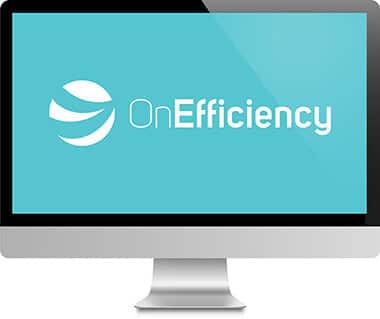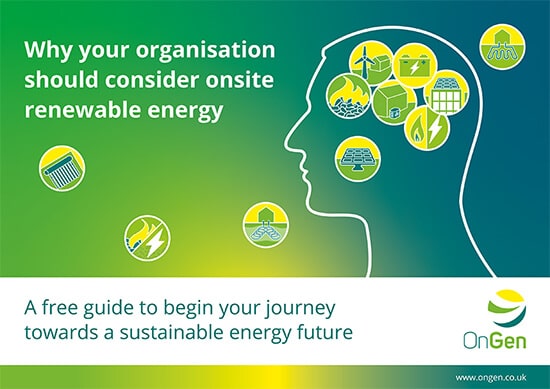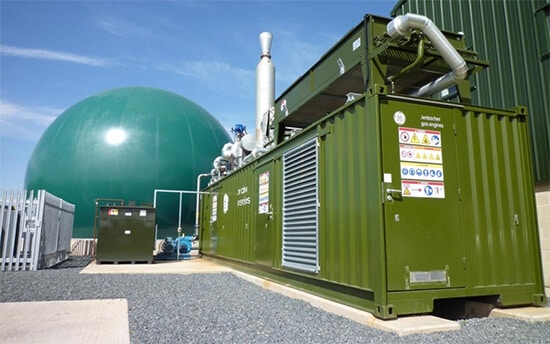Natural Gas Combined Heat and Power (CHP) Systems

What is a Natural Gas Combined Heat and Power (CHP) System?
CHP systems, also known as cogeneration systems, provide both heat and power from a single source of energy; working to the principles of a Stirling engine. Unlike central station generation, CHP is a type of distributed generation which is located at or near the point of consumption.
By using the heat created, which is normally a by-product that would be lost, CHP systems typically achieve efficiencies greater than 80%. It therefore makes sense to consider CHP units when there is a need for both power and heat at a site. The technology can also be deployed quickly, cost-effectively, and with few geographic limitations.
The term CHP covers a suite of technologies that can use a variety of fuels, e.g. biomass or gas, to generate electricity or power at the point of use. In the case of a gas CHP system, the input fuel is natural gas.
By using the heat created, which is normally a by-product that would be lost, CHP systems typically achieve efficiencies greater than 80%. It therefore makes sense to consider CHP units when there is a need for both power and heat at a site. The technology can also be deployed quickly, cost-effectively, and with few geographic limitations.
The term CHP covers a suite of technologies that can use a variety of fuels, e.g. biomass or gas, to generate electricity or power at the point of use. In the case of a gas CHP system, the input fuel is natural gas.
How does a Natural Gas Combined Heat and Power (CHP) System work?
In a gas CHP system, the combustion turbine or reciprocating engine CHP systems burn natural gas as a fuel to turn generators that subsequently produce electricity. Heat recovery devices are then used to capture the heat from the turbine or engine. As with biomass CHP, this heat is converted into useful thermal energy, usually in the form of steam or hot water.
Gas CHP has become a well-established and proven technology in the UK. They can operate with up to 90% efficiency and a commercial CHP unit turns approximately 60% of its input energy into heat and 30% into electricity. Unlike biomass CHP that constantly needs to run at full capacity, gas CHP units can modulate their output between 50% and 100% to match the base heating load of a building. As a result, end-users typically see savings in the region of 20% to 30%.
Gas CHP has become a well-established and proven technology in the UK. They can operate with up to 90% efficiency and a commercial CHP unit turns approximately 60% of its input energy into heat and 30% into electricity. Unlike biomass CHP that constantly needs to run at full capacity, gas CHP units can modulate their output between 50% and 100% to match the base heating load of a building. As a result, end-users typically see savings in the region of 20% to 30%.
How are Natural Gas Combined Heat and Power (CHP) Systems applied to a building?
Gas CHP units are designed to run long hours, ideally 16 hours a day and very often 24 hours a day. To do this the unit needs to be sized correctly to be able to supply the base heat and electrical loads. The CHP unit will operate automatically and can modulate but ideally needs to run at full load for as long as possible to maximise efficiency and minimise wear.
If the electrical site load drops below the CHP output, then there are two possible outcomes depending on the localised conditions. The CHP power could be exported under a pre-agreed import/export agreement (however sometimes this may not be financially beneficial) or the other consideration is to modulate the CHP electrical output, to match the site load requirements so all the site power comes from the CHP. On some occasions the site heat load falls below the CHP heat output and when this happens the heat will need to be rejected. This part of the operation may not be eligible for the financial incentives.
Gas CHP systems need to have access to a reliable gas supply; if a mains gas connection is not available, one would need to be installed. Space for the unit is needed in or next to the existing boiler plant room. The CHP unit can be integrated to sit alongside existing boilers but can be installed in a new dedicated plant room if required. For integration alongside existing boilers, an available installation space of at least 8m squared with a minimum ceiling height of 2m and entrance of at least 0.8m wide is required.
In jurisdictions that have significantly decarbonised grid derived electricity through the mass deployment of renewable generation, electricity derived from fossil fuelled CHP’s such as gas, could lead to increased carbon emissions.
If the electrical site load drops below the CHP output, then there are two possible outcomes depending on the localised conditions. The CHP power could be exported under a pre-agreed import/export agreement (however sometimes this may not be financially beneficial) or the other consideration is to modulate the CHP electrical output, to match the site load requirements so all the site power comes from the CHP. On some occasions the site heat load falls below the CHP heat output and when this happens the heat will need to be rejected. This part of the operation may not be eligible for the financial incentives.
Gas CHP systems need to have access to a reliable gas supply; if a mains gas connection is not available, one would need to be installed. Space for the unit is needed in or next to the existing boiler plant room. The CHP unit can be integrated to sit alongside existing boilers but can be installed in a new dedicated plant room if required. For integration alongside existing boilers, an available installation space of at least 8m squared with a minimum ceiling height of 2m and entrance of at least 0.8m wide is required.
In jurisdictions that have significantly decarbonised grid derived electricity through the mass deployment of renewable generation, electricity derived from fossil fuelled CHP’s such as gas, could lead to increased carbon emissions.
The three-step process to net zero energy
OnGen offers a three-step process through OnGen Expert, OnEfficiency & OnSupply. Steps can be done holistically or separately.

Step 1:
Reduce energy consumption:
With OnEfficiency, we can help you identify where and what you can do to reduce energy consumption and improve energy efficiency.
By becoming more energy efficient, carbon emissions for your organisation will begin to reduce, along with the cost of energy.
By becoming more energy efficient, carbon emissions for your organisation will begin to reduce, along with the cost of energy.

Step 2:
Consider onsite renewable energy and battery storage:
With the OnGen Expert, we can help you explore the feasibility of generating and storing your own energy via a range of onsite renewable energy generation sources, like solar PV and heat pumps.
Switching to generating renewable energy onsite reduces the demand for grid-supplied energy, lowering the cost of energy bills, gaining resilience to grid fluctuations and reducing carbon emissions.
Switching to generating renewable energy onsite reduces the demand for grid-supplied energy, lowering the cost of energy bills, gaining resilience to grid fluctuations and reducing carbon emissions.

Step 3:
Switch to zero-carbon energy suppliers:
With OnSupply, we can help you find the cheapest green energy tariffs for any grid-supplied gas and electricity demand.
Eliminate the remaining energy-related carbon emissions for your organisation.
Eliminate the remaining energy-related carbon emissions for your organisation.
Your organisation will be assigned a dedicated account manager, who will offer training support and guidance. Additionally, if your organisation is struggling for time, the Managed Service, where assessments are conducted by the OnGen team on your behalf, can be a great option.

Talk to one of our team
Book a 20-minute conversation to discuss how we can help you by providing the right information, to make the right decisions.


Download our free Renewable Energy Guide
Case Study
“By assessing solar capability using the OnGen Expert software, we have been able to identify 4,000 tonnes of potential carbon savings in our city-centre building stock. OnGen has made it simple and easy for us to demonstrate potential energy costs savings of £2.9 million across the lifetime of potential onsite renewable installations. The OnGen Expert software has shown us the potential of onsite generation at a fraction of the cost of traditional assessments/consultants.”
NEYH
Book a conversation with OnGen today
Interested in finding out more information? Set up a meeting with a member of our team to discuss how we can help you.









